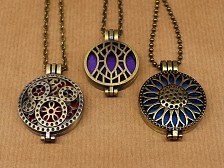
|
Aromatherapy Pendant Bronze Metal
|
Pendants that can hold a few drops of perfume oil, aromatic oil, essentail oil or liquid resins of aromatic plants. They have a lid that opens, and inside is a cotton pad, on which perfume oils can be dropped. |
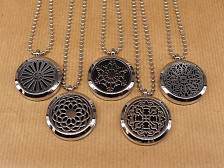
|
Aromatherapy Pendant Steel
|
Aromatherapy pendant lockets, laser-cut from stainless steel in beautiful sacred geometry designs. A personal essential oil diffuser on the go! To brighten your mood, open the pendant locket and simply drop a few drops essential oil on the cotton insert for all day aromatic pleasure. |
3 Forms |
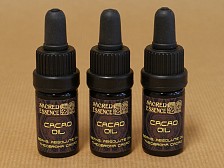
|
Cacao absolute oil
|
Cacao absolute oil, derived from the bean of the Theobroma cacao tree. It can be added to bath and body products if you want an intense chocolate aroma! This oil has been purified several times to make sure there is no oxydation process active, and that all impurities, water or oxygen are removed. This ensures a long shelf life and lasting aroma. |

|
Gift set - Well-being
|
Revitalize your entire being with our luxurious Well-Being set. This quality set is designed to support holistic wellness. |
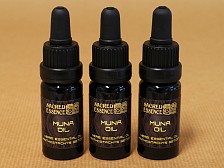
|
Muna essential oil
|
Muna-Muna belongs to the Mint family. It is a multi-branched, small leaved deciduous shrub prized for its medicinal and aromatic values. Pure essential oil from leaves of Muna from Peru. |
2 Forms |
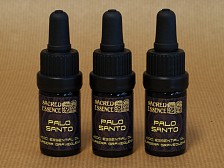
|
Palo Santo Essential Oil
|
Pure essential oil made from aged Palo Santo wood, from naturally fallen trees, from area Lambayeque, Olmos, Peru. Only the wood from naturally fallen trees are used, because only then the wood and its oil have their unique fragrance. |
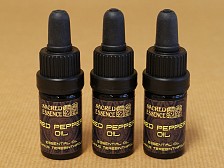
|
Red Pepper Essential Oil
|
Brazilian Pepper has a charming sweet, soft, refreshing aroma. It has powerful antifungal and general antimicrobial properties. |